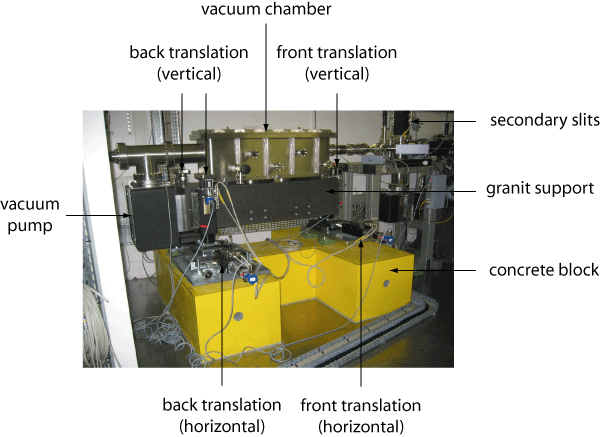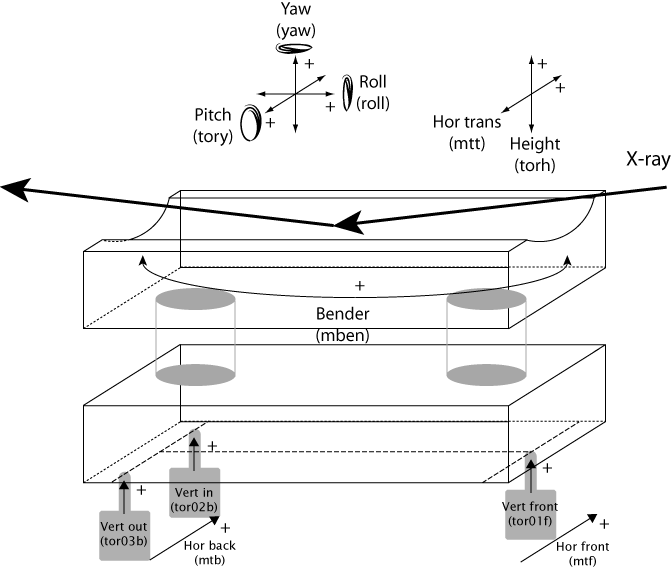Toroidal Mirror
The focusing toroidal mirror is located after the secondary slits. To avoid vibrational problems the mirror mounted in the bender is directly bolted on its granit support and kept under vacuum through bellowes. The support for the five translation motors is made of concrete (painted in yellow) instead of metal to increase stability.

The mirror has been ordered from Crystal Scientific, a UK company based in Northumberland. This company is specialised in producing high quality crystal diffraction optics and making synchrotron radiation mirrors (micro-focusing Kirkpatrick-Baez systems for example). ID23-1 mirror was however the first toroidal mirror they had in production. Its size is 780 mm x 50 mm x 40 mm for a working area of 700 mm x 20 mm.
As a toroid, this mirror is defined by two radii: the minor (also called sagital) radius is fixed at 39.0 +/- 0.5 mm; the major (or meridional) radius was specified at infinite, meaning flat. In order to obtain the optimum meridional radius (4.3 km), the mirror is fitted in an IRELEC bender designed and licensed from ESRF.

The bender is directly bolted on a three feet granit table (one front foot and two back feet) plus two horizontal translations. With this current setup, it is possible to define five independant degrees of freedom:
-
two translations: one vertical called torh and one horizontal mtt (both perpendicular to the X-ray beam)
-
three rotations: tory and yaw both perpendicular to the X-ray beam and one called roll colinear with the X-ray beam.
We can moreover adjust the bending radius of the mirror by moving a motor called mben. All those motors are accessible and automatically twinned to get focused X-ray beam.



